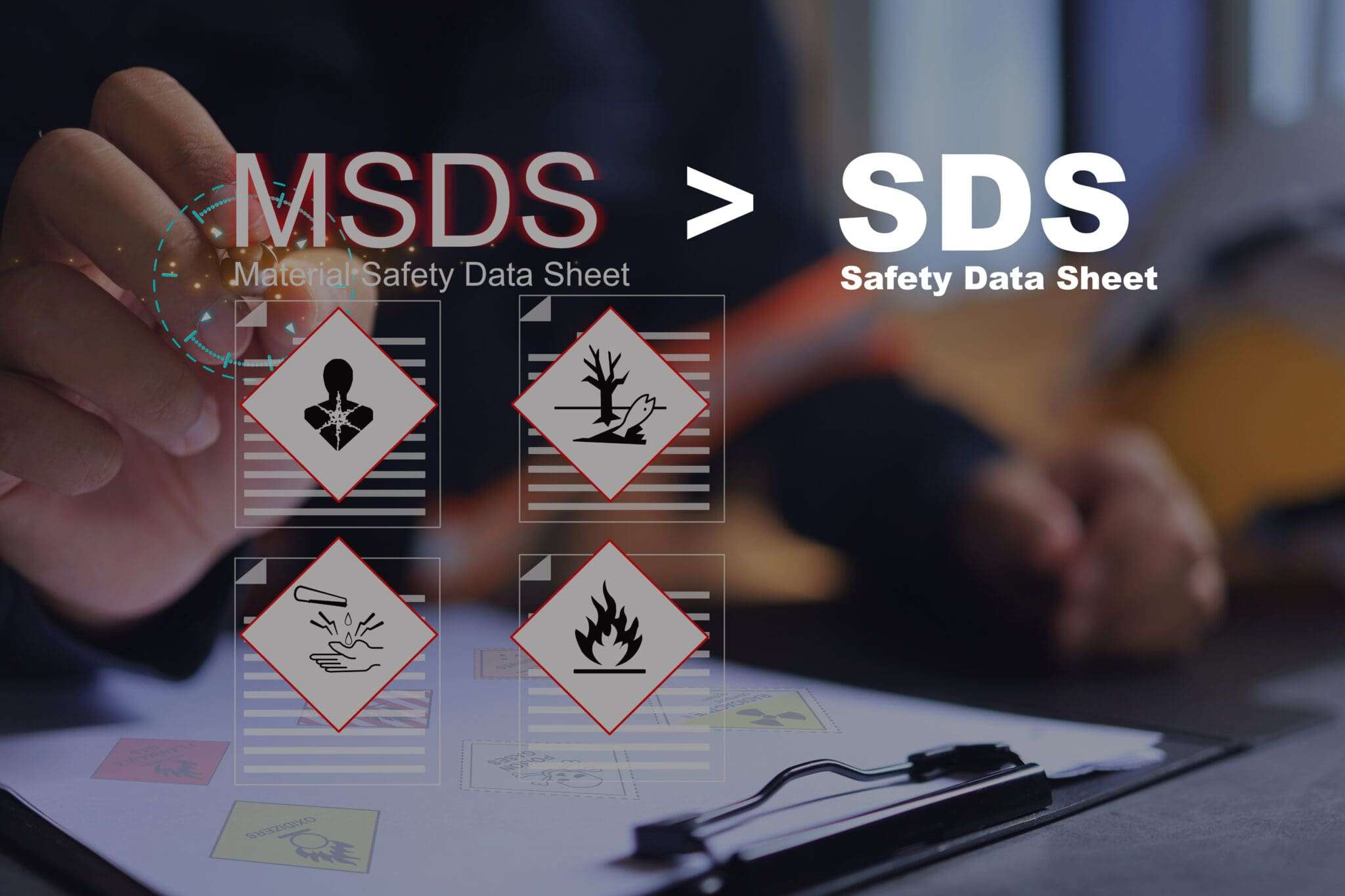Safety data sheets are crucial for ensuring the safe handling, storage, and transportation of hazardous substances. The conversionfrom Material Safety Data Sheets (MSDS) to Safety Data Sheets (SDS) marks a significant shift in the standardization and accessibility of chemical safety information.
In this comparison of MSDS vs. SDS, you’ll learn the basics and key differences between these labeling frameworks.
GHS and All About Labeling of Chemicals
The Globally Harmonized System (GHS) is an international standard for chemical hazard communication. It provides clear guidance on labeling and identifying hazardous substances and ensures that hazards are communicated consistently across different countries and regions.
What Regions Follow the Same Guidelines?
Many regions have adopted GHS to varying degrees, including:
- The United States
- The European Union
- Canada
- Brazil
- China
However, each nation may have slight variations in their implementation, as countries have adopted different versions of the GHS and some have implemented it either fully or partially.
What Is GHS?
The Globally Harmonized System of Classification and Labeling of Chemicals was developed by the United Nations to standardize the classification of chemicals across all nations. It aims to make sure that information about hazards is consistent and clearly communicated across the globe. This system uses standardized symbols, signal words, and safety data sheets to help users understand and handle chemicals safely.
What Is MSDS?
Material Safety Data Sheets are documents that provide detailed information about the properties, hazards, and safe handling practices of chemical substances. Historically, MSDS were non-standardized documents used to inform workers and emergency personnel about the risks associated with chemicals and how to manage those threats.
When Did MSDS Become SDS?
As different countries adopted the GHS, they also began the transition from MSDS to SDS. In the United States, the Occupational Safety and Health Administration (OSHA) revised its Hazard Communication Standard (HCS) in 2012 to align with GHS. As part of these revisions, OSHA mandated the use of SDS.
MSDS vs. SDS
When it comes to MSDS vs. SDS, there are numerous distinctions. Here are some of the differences between these two document types:
SDS Classifications
Safety Data Sheets provide more structured and detailed information than the older MSDS format. SDS follows a standardized 16-section format, ensuring that critical safety information is presented in a consistent manner across all documents.
The sections include:
- Identification
- Hazards
- Composition
- First-aid measures
- Fire-fighting measures
- Accidental release measures
- Handling and storage
- Exposure controls/personal protection
- Physical and chemical properties
- Stability and reactivity
- Toxicological information
- Ecological information
- Disposal considerations
There are also sections for regulatory, transport, and other information.
Major Differences Between the Two
The major distinctions between MSDS vs. SDS are as follows:
- Standardization: MSDS formats could vary between manufacturers, but SDS must follow the same format
- Content Detail: SDS provides more data about hazards
- Clarity: SDS ensures that safety information gets presented consistently
In summary, the modern format offers a better view of chemical hazards, as well as the appropriate response to exposure.
MSDS vs SDS: What Is Better?
MSDS and SDS sheets both convey critical safety information. However, Safety Data Sheets are the far better option, as they offer more detail, a consistent format, and critical guidance for safely handling chemicals.
Labeling Updates
GHS has introduced standardized labeling requirements, ensuring that chemical packaging includes harmonized pictograms, signal words, and hazard statements. These labels provide immediate visual warnings and critical safety information at a glance.
How Many Sections Does MSDS Have vs. SDS?
Typically, Material Safety Data Sheets contain 8–12 sections. Safety Data Sheets always include 16 sections.
What Is More Widely Used?
SDS have become the global standard and are more widely used. However, a handful of manufacturers still use MSDS.
How to Create SDS and Why to Move Away From MSDS
Now that you are more familiar with the importance of safety data sheets, it’s time to move away from MSDS and adopt the more universal SDS framework. Thanks to TotalSDS, managing SDS updates does not have to be a daunting process.
As a leader in SDS and hazard communication compliance solutions, TotalSDS provides proprietary software to make the workplace safer. Schedule a demo to learn more.



